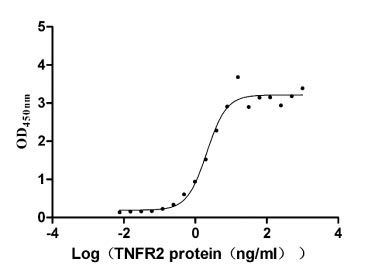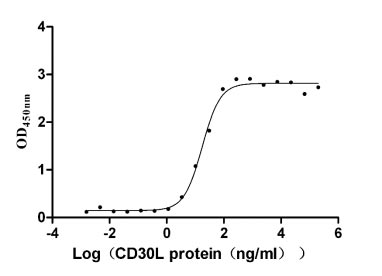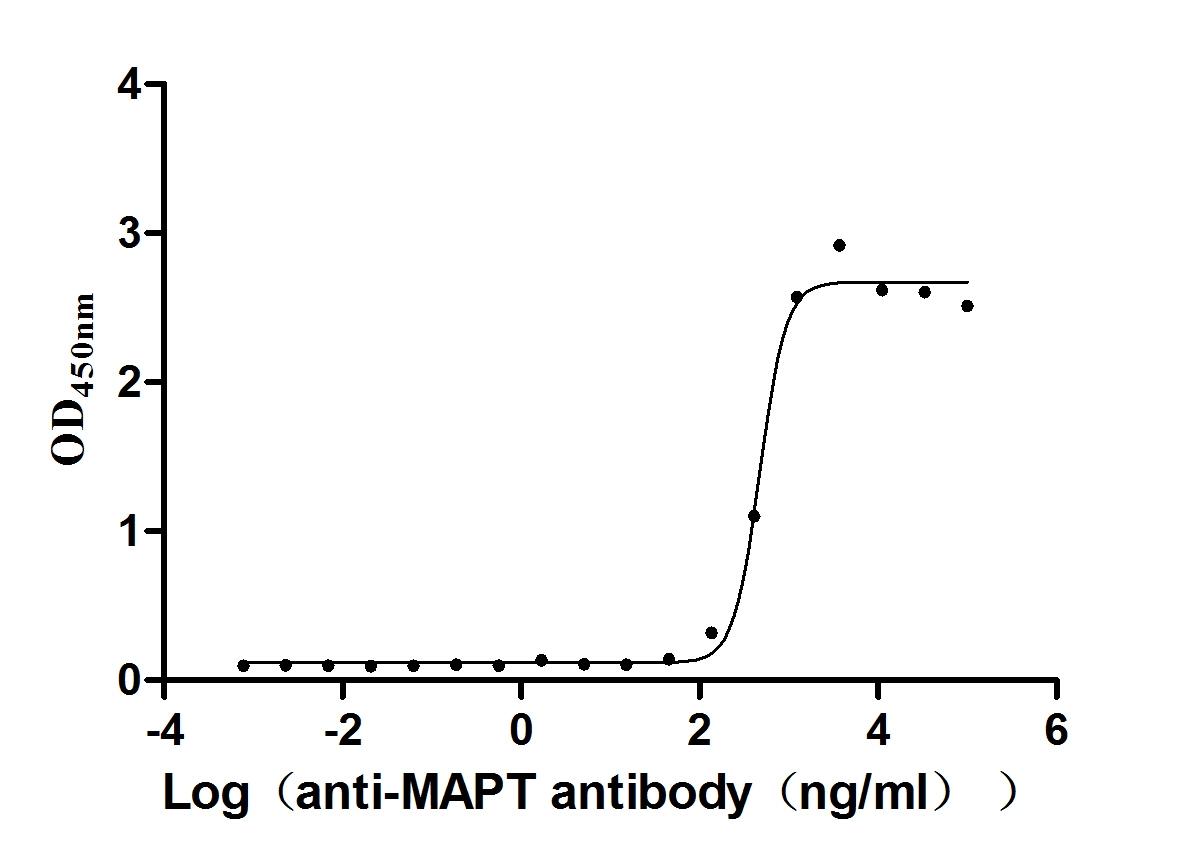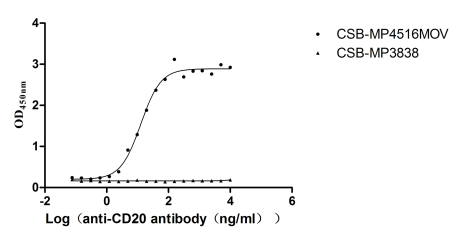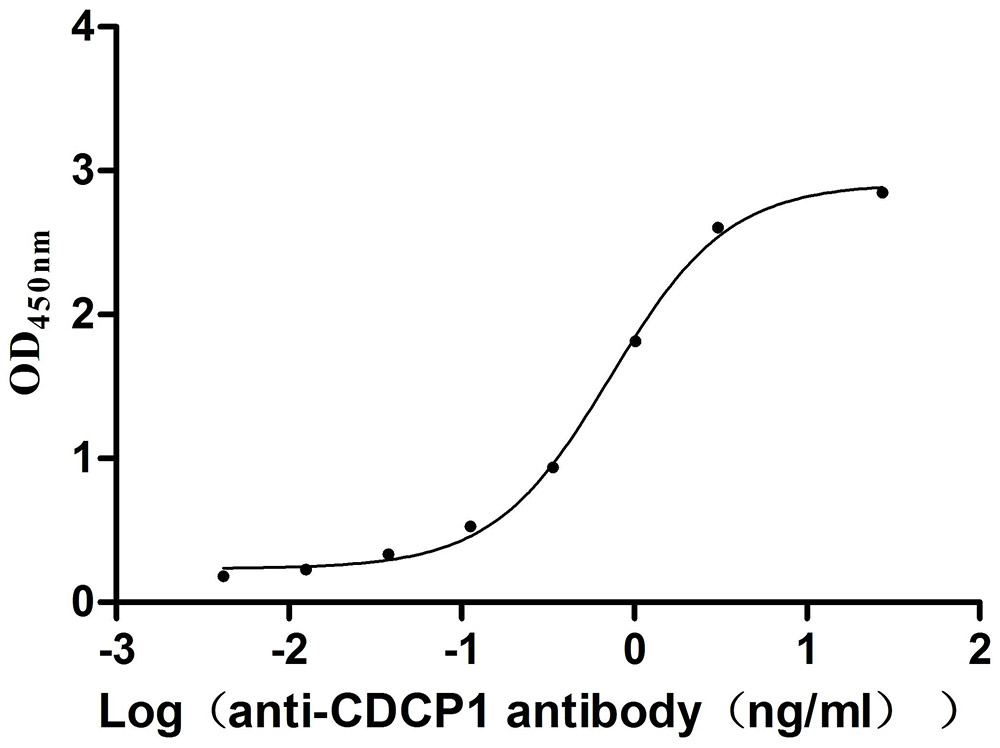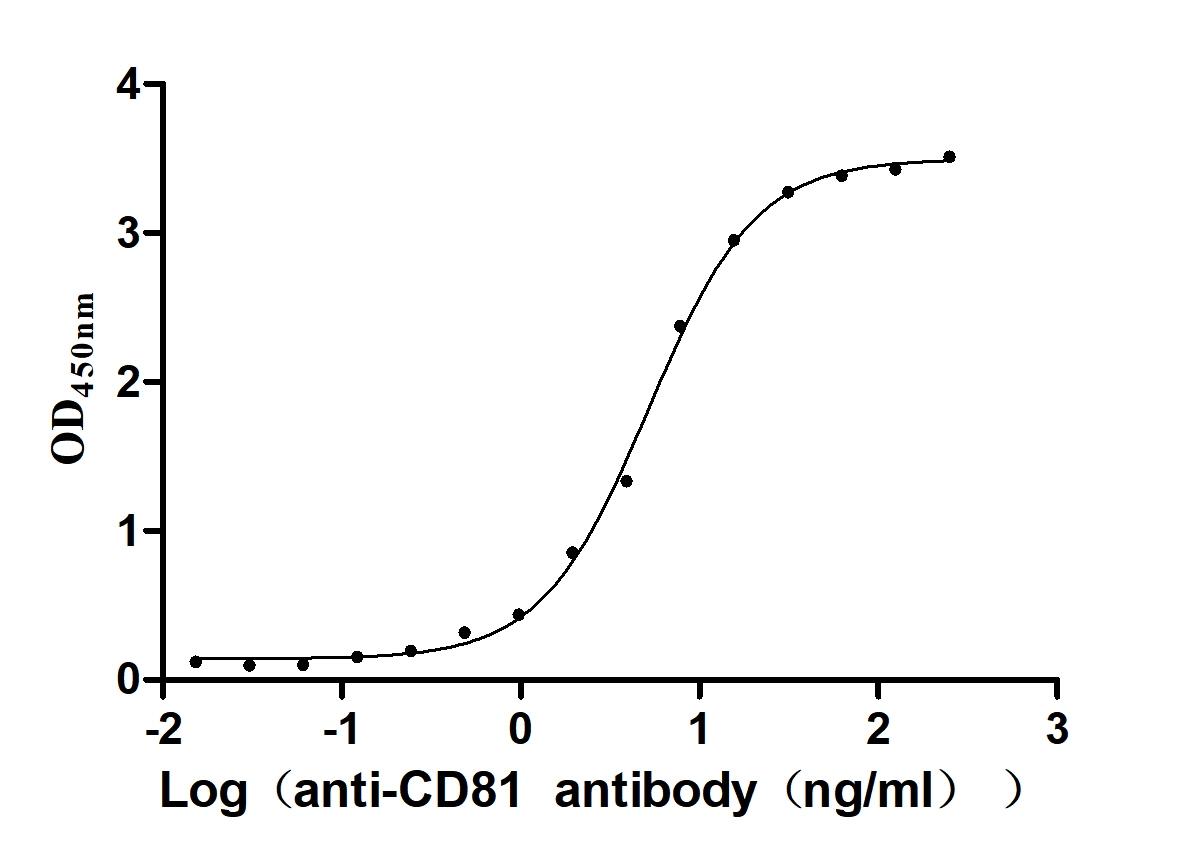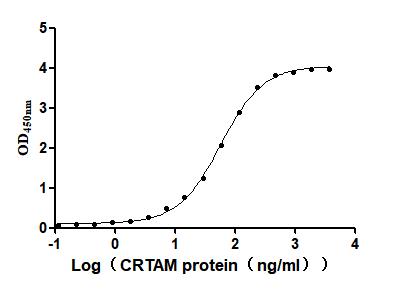Recombinant Mouse Histone H3.3 (H3-3a)
-
中文名称:小鼠H3-3a重组蛋白
-
货号:CSB-YP010106MO
-
规格:
-
来源:Yeast
-
其他:
-
中文名称:小鼠H3-3a重组蛋白
-
货号:CSB-EP010106MO
-
规格:
-
来源:E.coli
-
其他:
-
中文名称:小鼠H3-3a重组蛋白
-
货号:CSB-EP010106MO-B
-
规格:
-
来源:E.coli
-
共轭:Avi-tag Biotinylated
E. coli biotin ligase (BirA) is highly specific in covalently attaching biotin to the 15 amino acid AviTag peptide. This recombinant protein was biotinylated in vivo by AviTag-BirA technology, which method is BriA catalyzes amide linkage between the biotin and the specific lysine of the AviTag.
-
其他:
-
中文名称:小鼠H3-3a重组蛋白
-
货号:CSB-BP010106MO
-
规格:
-
来源:Baculovirus
-
其他:
-
中文名称:小鼠H3-3a重组蛋白
-
货号:CSB-MP010106MO
-
规格:
-
来源:Mammalian cell
-
其他:
产品详情
-
纯度:>85% (SDS-PAGE)
-
基因名:H3-3a
-
Uniprot No.:
-
别名:H3-3a; H3.3a; H3f3a;; H3-3b; H3.3b; H3f3b; Histone H3.3
-
种属:Mus musculus (Mouse)
-
蛋白长度:Full Length of Mature Protein
-
表达区域:2-136
-
氨基酸序列ARTKQTARK STGGKAPRKQ LATKAARKSA PSTGGVKKPH RYRPGTVALR EIRRYQKSTE LLIRKLPFQR LVREIAQDFK TDLRFQSAAI GALQEASEAY LVGLFEDTNL CAIHAKRVTI MPKDIQLARR IRGERA
-
蛋白标签:Tag type will be determined during the manufacturing process.
The tag type will be determined during production process. If you have specified tag type, please tell us and we will develop the specified tag preferentially. -
产品提供形式:Lyophilized powder
Note: We will preferentially ship the format that we have in stock, however, if you have any special requirement for the format, please remark your requirement when placing the order, we will prepare according to your demand. -
复溶:We recommend that this vial be briefly centrifuged prior to opening to bring the contents to the bottom. Please reconstitute protein in deionized sterile water to a concentration of 0.1-1.0 mg/mL.We recommend to add 5-50% of glycerol (final concentration) and aliquot for long-term storage at -20℃/-80℃. Our default final concentration of glycerol is 50%. Customers could use it as reference.
-
储存条件:Store at -20°C/-80°C upon receipt, aliquoting is necessary for mutiple use. Avoid repeated freeze-thaw cycles.
-
保质期:The shelf life is related to many factors, storage state, buffer ingredients, storage temperature and the stability of the protein itself.
Generally, the shelf life of liquid form is 6 months at -20°C/-80°C. The shelf life of lyophilized form is 12 months at -20°C/-80°C. -
货期:Delivery time may differ from different purchasing way or location, please kindly consult your local distributors for specific delivery time.Note: All of our proteins are default shipped with normal blue ice packs, if you request to ship with dry ice, please communicate with us in advance and extra fees will be charged.
-
注意事项:Repeated freezing and thawing is not recommended. Store working aliquots at 4°C for up to one week.
-
Datasheet :Please contact us to get it.
靶点详情
-
功能:Variant histone H3 which replaces conventional H3 in a wide range of nucleosomes in active genes. Constitutes the predominant form of histone H3 in non-dividing cells and is incorporated into chromatin independently of DNA synthesis. Deposited at sites of nucleosomal displacement throughout transcribed genes, suggesting that it represents an epigenetic imprint of transcriptionally active chromatin. Nucleosomes wrap and compact DNA into chromatin, limiting DNA accessibility to the cellular machineries which require DNA as a template. Histones thereby play a central role in transcription regulation, DNA repair, DNA replication and chromosomal stability. DNA accessibility is regulated via a complex set of post-translational modifications of histones, also called histone code, and nucleosome remodeling.
-
基因功能参考文献:
- Data suggest a role for H3 histone lysine 9 (H3K9) methylation in promoting DNA methylation, and indicate that DNA maintenance methylation in mammals is largely independent of H3K9 methylation. PMID: 27554592
- Data show that knockdown of either H3f3a or H3f3b in isolation in brain is not sufficient to block stimulus-dependent H3.3 protein turnover. PMID: 27791098
- results point to the importance of integrating histone modifications and MyoD chromatin binding for coordinated gene activation and repression during myogenic differentiation. PMID: 28609469
- Data show that circulating histone H3 increased significantly in necrotizing pancreatitis. PMID: 26335015
- In H3f3a and H3f3b null mouse embryonic stem cells, H3.3 deficiency results in reduced levels of H3K9me3 level, H4K20me3 and ATRX at the telomeres, accompanied with an increase in telomeric transcription. PMID: 26304540
- an important function of H3.3 is to support chromosomal heterochromatic structures, thus maintaining genome integrity during mammalian development. PMID: 26159997
- Data indicate a function of the histone H3S28 phosphorylation mark in the activation of mammalian genes in response to MAP kinase pathway activation. PMID: 25135956
- Data indicate that increased tumor necrosis factor (Tnfa) and monocyte chemotactic protein 1 (Mcp1; also known as Ccl2) expression in fatty liver at the chromatin level corresponds to changes in the level of histone H3 acetylation. PMID: 25319795
- There is a decreased H3K27 and H3K4 trimethylation on mortal chromosomes in distributed stem cells. PMID: 25476902
- An H3K9/S10 methyl-phospho switch modulates Polycomb and Pol II binding at repressed genes during differentiation. PMID: 24430871
- Histone H3.3 regulates dynamic chromatin states during spermatogenesis. PMID: 25142466
- H3.3 is a crucial maternal factor for oocyte reprogramming PMID: 24799717
- Data demonstrate the importance of H3.3 in maintaining a chromatin landscape in embryonic stem cells that is important for proper gene regulation during differentiation. PMID: 24074864
- H3.3 mediates a balance between open and condensed chromatin that is crucial for the fidelity of chromosome segregation during early mouse development. PMID: 23903189
- Nuclear factor kappaB (NF-kappaB) transcription factor inhibition impairs memory persistence and, concomitantly, reduces the general level of H3 acetylation. PMID: 23616565
- Data suggest that histone H3 methylation at Sox4 gene and histone H3-acetylation and H3 methylation at Sox11 gene are low during retinal development but increase markedly in adult retina. PMID: 23313252
- The data indicated that MyoD determines cell fate and facilitates differentiation- dependent gene expression through Chd2-dependent deposition of H3.3 at myogenic loci prior to differentiation. PMID: 22569126
- These results suggest that demethylation of H3K9 in round spermatids is dispensable for spermatogenesis but that possible defects in Kdm4d-null elongating spermatids could be rescued by functional redundancy of the KDM4B demethylase. PMID: 21293030
- Discovery of a subgroup of genes linked to T cell functions displaying high levels of H3K4me2 within their gene body. PMID: 20841431
- angiogenesis is regulated by histone chaperone HIRA-mediated incorporation of lysine 56-acetylated histone H3.3 at chromatin domains of endothelial genes PMID: 21041298
- Results demonstrate a role for a modifiable residue within a histone-variant-specific context during reprogramming and identifies a novel function for mammalian H3.3 in the initial formation of dsRNA-dependent heterochromatin. PMID: 20676102
- Data show that the majority of H3K4/K27me3 co-enriched promoters are distinct between the two lineages, primarily due to differences in the distribution of H3K27me3. PMID: 20161773
- Results support the hypothesis that histone H3.3 is incorporated after disruption of nucleosomes mediated by transcription elongation. PMID: 16258499
- Af9/Mllt3 interferes with Tbr1 expression through epigenetic modification of histone H3K79 during development of the cerebral cortex PMID: 20348416
- co-ordinated post-translational modifications of p65 and histone H3 involving phosphorylation and acetylation drive COX-2-dependent transcriptional activation of the MMP-9 gene in response to challenge of macrophages with M. avium. PMID: 17590163
显示更多
收起更多
-
亚细胞定位:Nucleus. Chromosome.
-
蛋白家族:Histone H3 family
-
数据库链接:
Most popular with customers
-
Recombinant Human Lymphotoxin-alpha (LTA) (Active)
Express system: Mammalian cell
Species: Homo sapiens (Human)
-
Recombinant Human Tumor necrosis factor receptor superfamily member 8 (TNFRSF8), partial (Active)
Express system: Mammalian cell
Species: Homo sapiens (Human)
-
Recombinant Mouse Microtubule-associated protein tau (Mapt) (Active)
Express system: Mammalian cell
Species: Mus musculus (Mouse)
-
Recombinant Macaca fascicularis Membrane spanning 4-domains A1 (MS4A1)-VLPs (Active)
Express system: Mammalian cell
Species: Macaca fascicularis (Crab-eating macaque) (Cynomolgus monkey)
-
Recombinant Mouse CUB domain-containing protein 1 (Cdcp1), partial (Active)
Express system: Mammalian cell
Species: Mus musculus (Mouse)
-
Recombinant Human CD81 antigen (CD81), partial (Active)
Express system: Mammalian cell
Species: Homo sapiens (Human)
-
Recombinant Human Cytotoxic and regulatory T-cell molecule (CRTAM), partial (Active)
Express system: Mammalian cell
Species: Homo sapiens (Human)
-
Recombinant Mouse Cytotoxic and regulatory T-cell molecule (Crtam), partial (Active)
Express system: Mammalian cell
Species: Mus musculus (Mouse)


